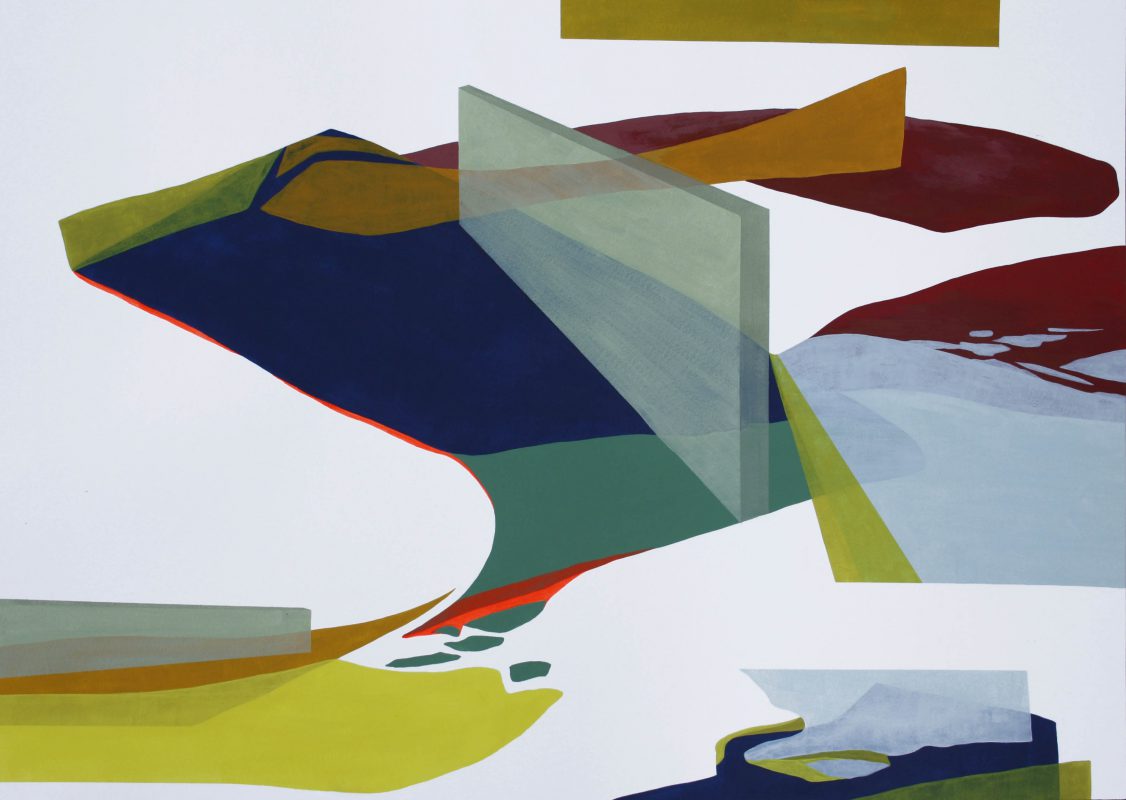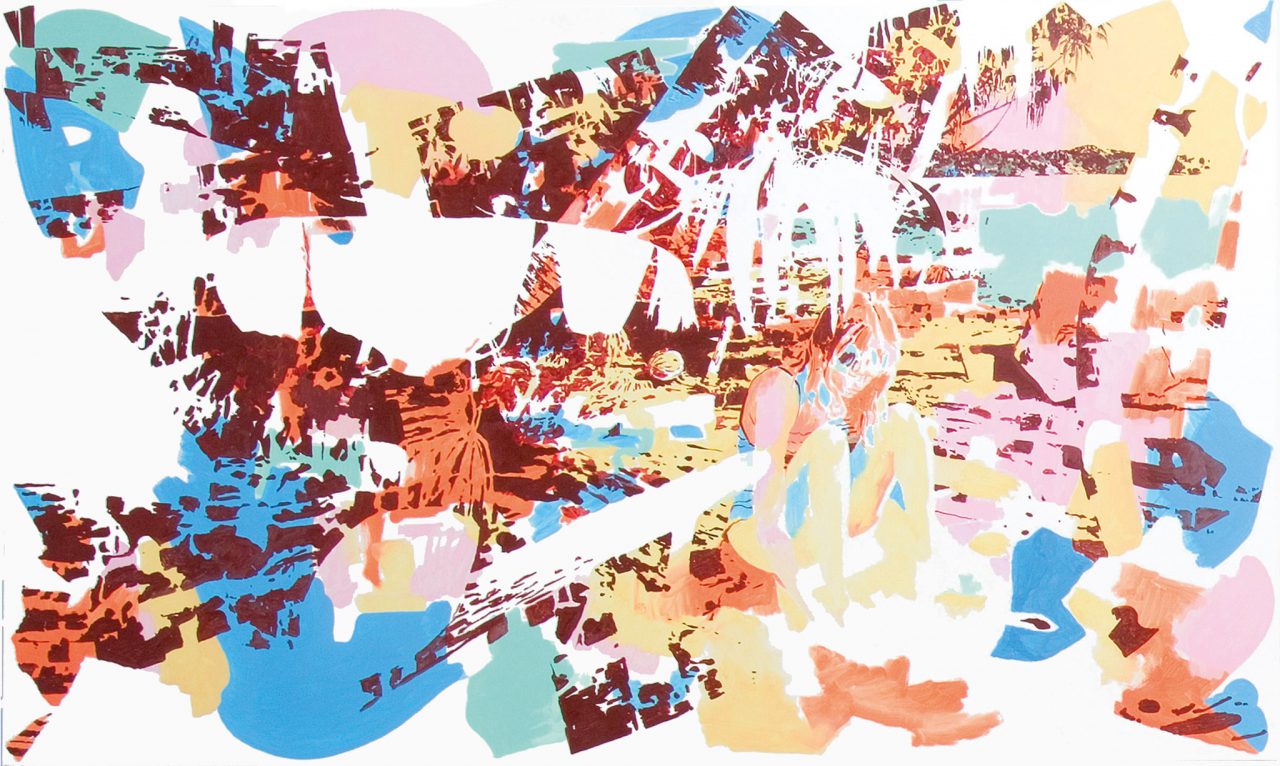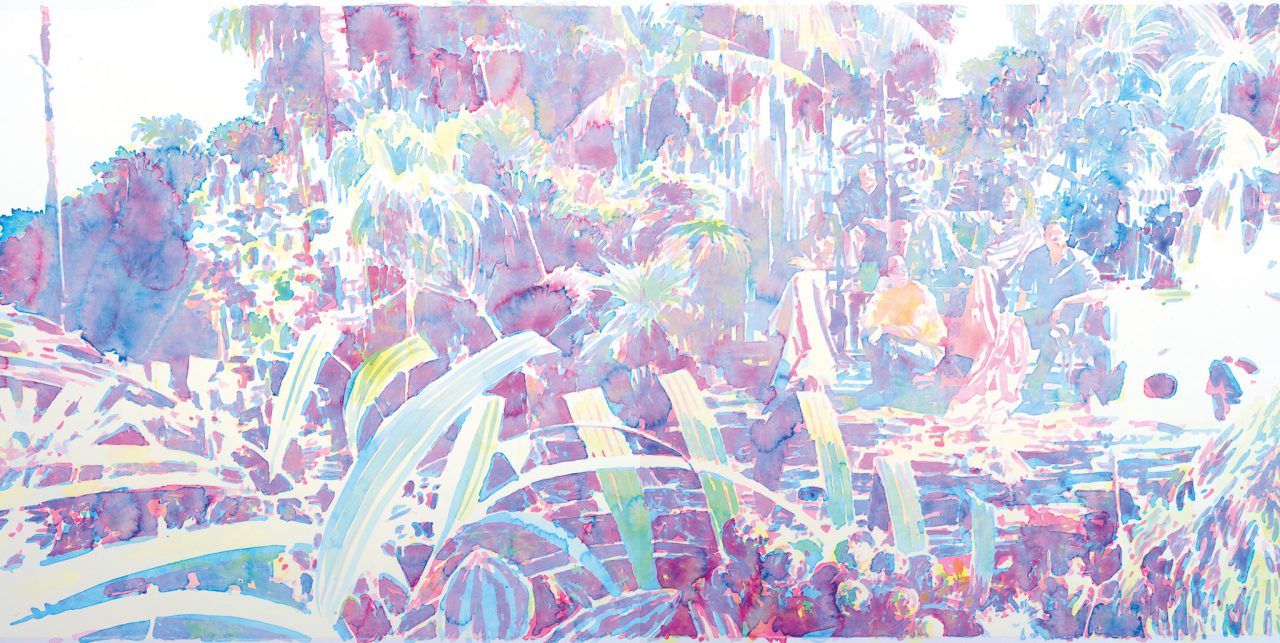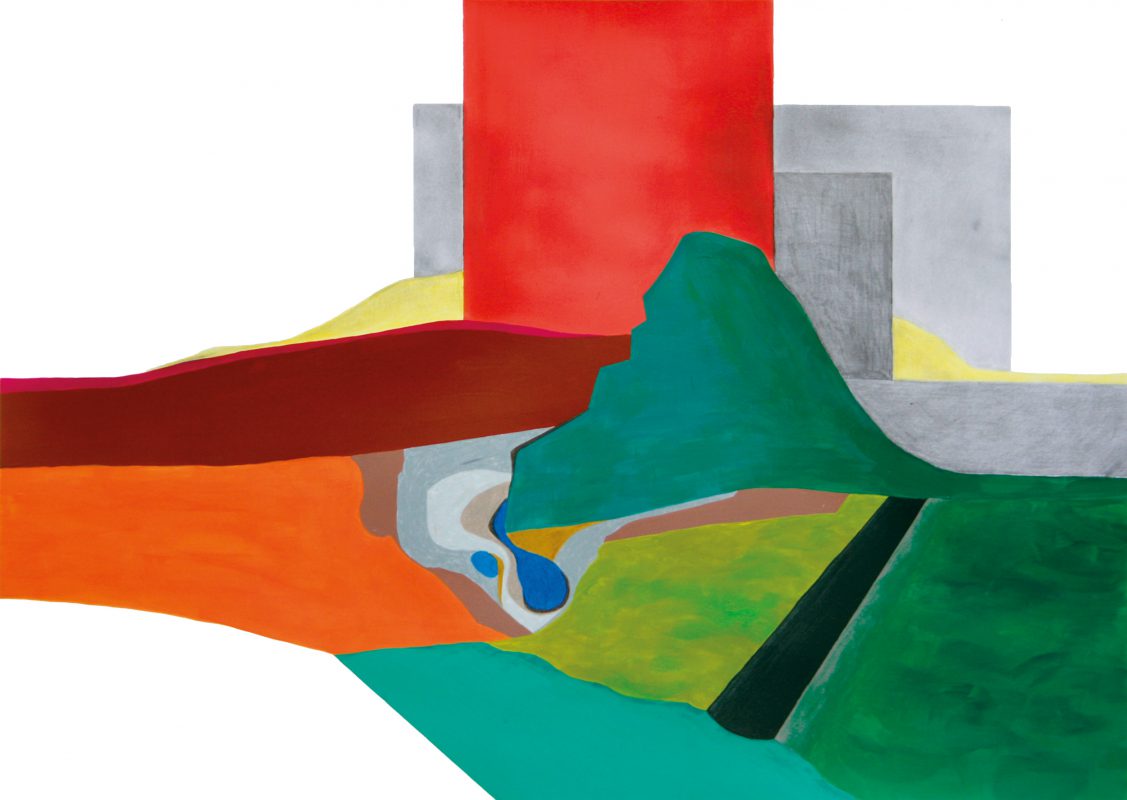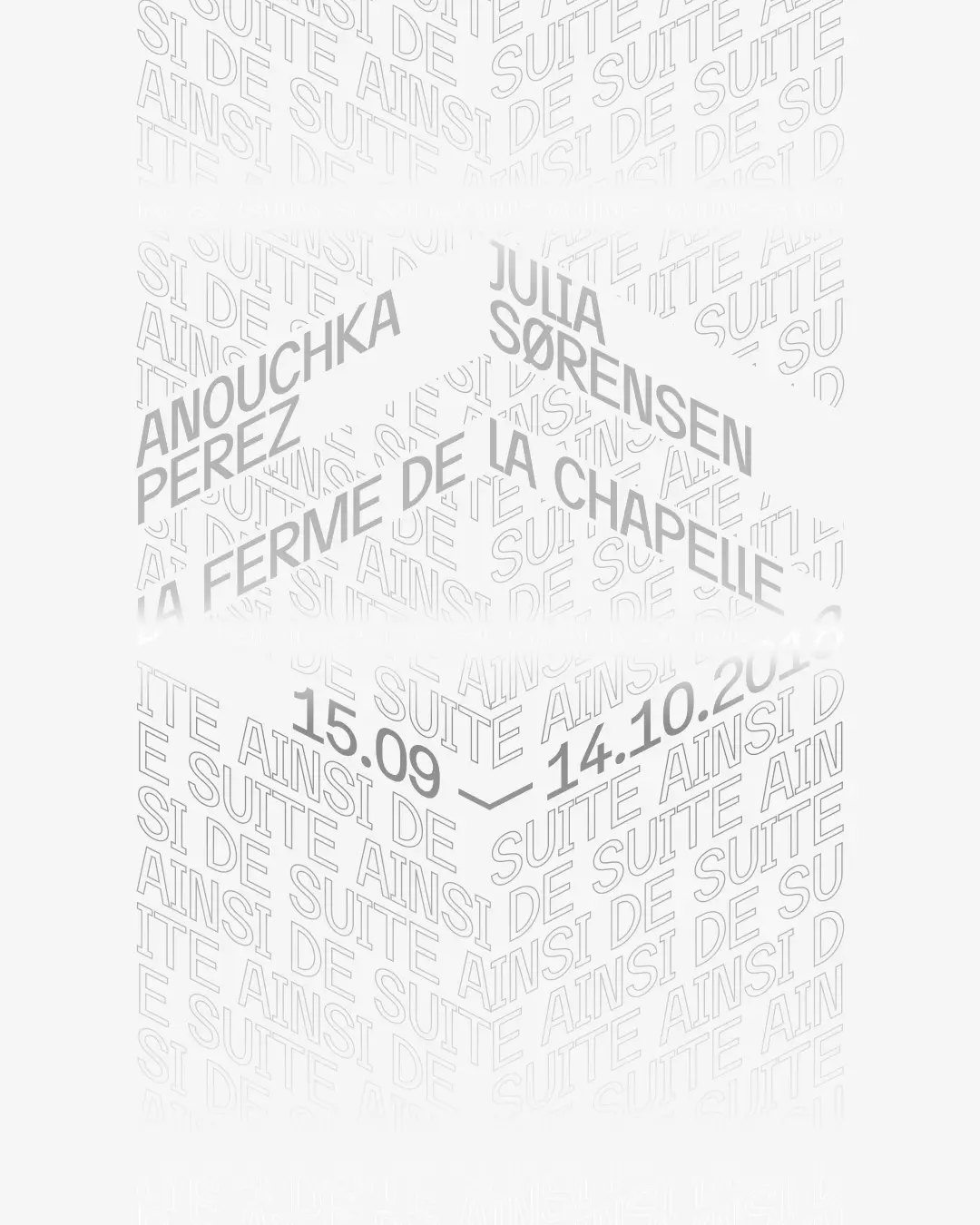
Alexandra Häberli
Michael Rampa
Landscape as pretext
The stylised or realist paintings of Alexandra Häberli and Michael Rampa depart from the classical approach to landscape by working with colour, absence, abstraction and volume.
In her paintings, Alexandra Häberli arranges surfaces which lie on top of one another and follow each other sustained by ranges of opaque or transparent colours. Geometrical forms are embedded amongst organic curves, creating disruptions as shocking as concrete eruptions in nature. Looking more closely at the seemingly abstract compositions, schematic landscapes with hills and cultivated fields invariably emerge. But everything in the paintings, from the acid colours to the absence of perspective, leads us back to the artificial; the artist's is principally examining chromatic effects and the arrangement of painted elements. Strips of canvas sometimes appear in unexpected places isolating painted surfaces which may even attach themselves to the wall. These isolated fragments are the first step towards three-dimensionality which is duly confirmed by sculptures, actually volume paintings, which punctuate the ensemble presented as a mural installation.
Painting as a concept creator is at the centre of Michael Rampa's artistic exploration although he doesn't exclude reflection and intellectual understanding of the action of painting itself. On the contrary, the brushstrokes and painting flow naturally out of the period of gestation which may take time and may produce moments of silence between one painting and another. Michael Rampa insists he is self-taught because he never followed the usual academic path. He has always sought to learn painting techniques. His works are born from doing, an act dominated by an idea which dissipates gradually as it is implemented, only to reappear at the end. From the primordial chaos of touches on the canvas, in transparent marks, emerges luxuriant vegetation which imprisons the gaze by an incessant to-ing and fro-ing between the figurative and the abstract. Figures lose themselves, in following a branch perhaps, or are surreal presences in this plant universe or perhaps ethereal silhouettes. Emptiness, composed of spaces held in reserve, takes a place as important as colour in these works. The composition perpetually organises and fragments, fragile as a memory, complex as a thought.

